What is the result of 23 minus 15?
6
7
8
9

Subtraction is one of the four fundamental operations in mathematics, serving as the inverse process of addition. It involves determining the difference between two numbers, where the first number (minuend) is reduced by the second number (subtrahend) to yield a result known as the difference. In simple terms, subtraction helps us figure out how much is left when a certain amount is taken away from another. For instance, if you have 10 apples and give away 4, subtraction allows you to calculate that you’re left with 6 apples (10 – 4 = 6). This operation is symbolized by the minus sign (“-“). Subtraction is a crucial mathematical skill, widely used in various aspects of daily life, from budgeting to measuring distances
The subtraction operation is represented by the minus sign (“-“), a fundamental symbol in mathematics that signifies the action of taking one quantity away from another. Understanding the parts involved in a subtraction expression is crucial for grasping how the operation works.
Minuend: The first number in a subtraction expression, from which another number is subtracted. It represents the starting quantity before subtraction takes place.
Subtrahend: The second number in the subtraction expression, which is taken away from the minuend. It represents the amount that is being subtracted from the first number.
Difference: The result of the subtraction operation. It is the remaining quantity after the subtrahend is taken away from the minuend.
In the subtraction expression 8 – 3 = 5:

Let’s have a look at the subtraction table of simple subtractions of numbers.
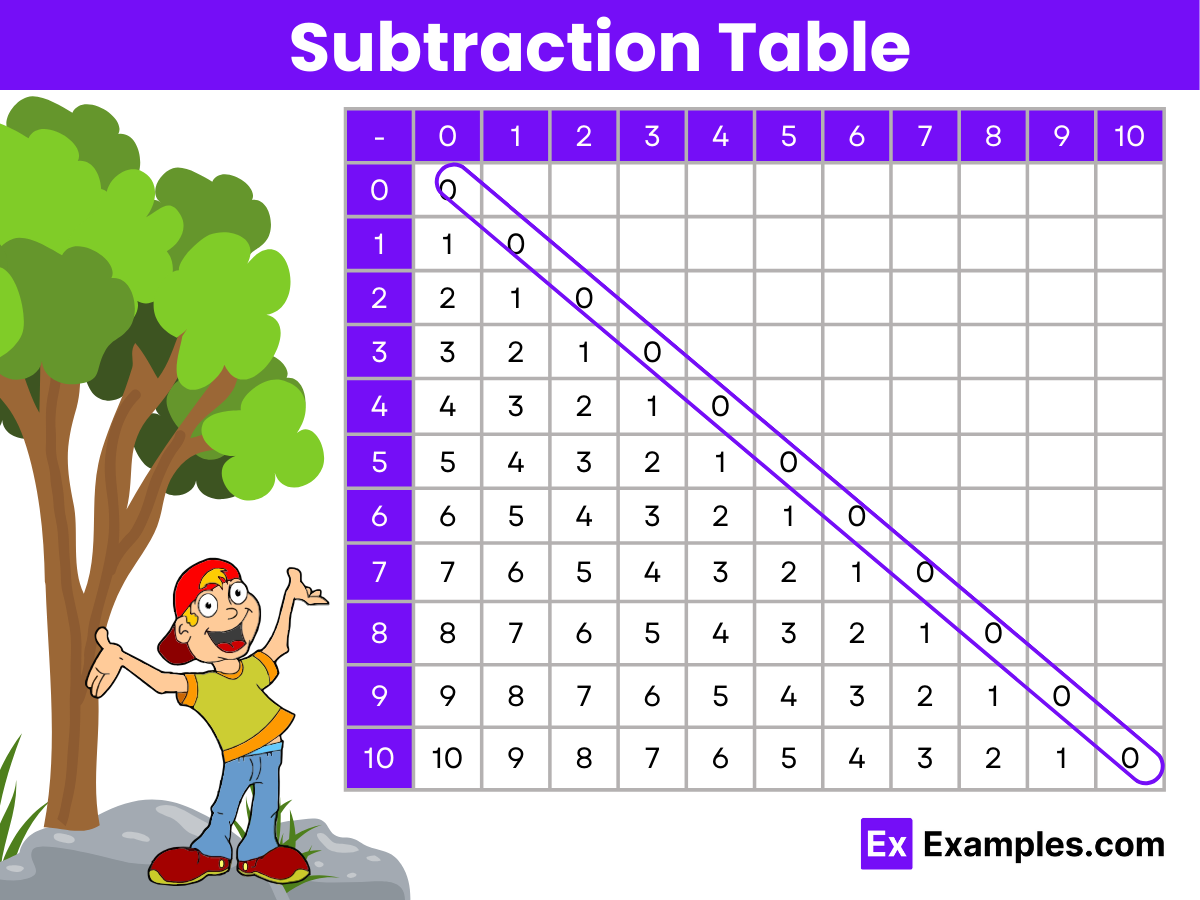
Subtraction can be applied to numbers with varying digits, from single to double, triple, and beyond. The process is straightforward for single-digit numbers, as demonstrated in the following examples:

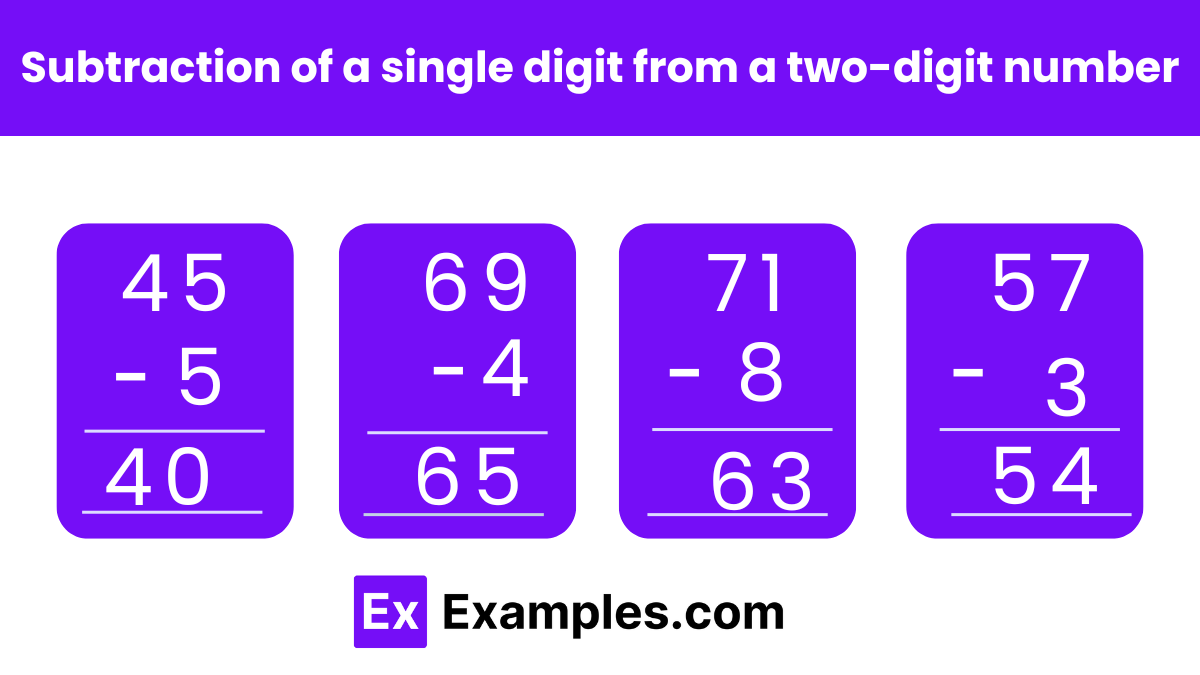
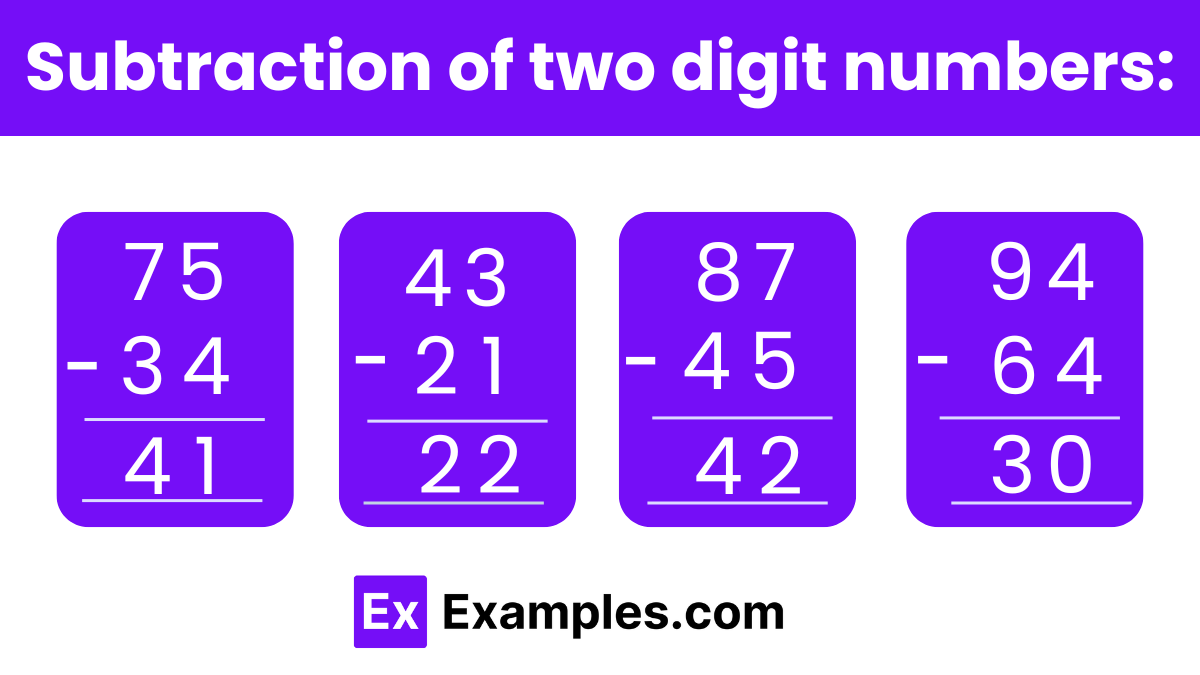
Subtracting fractions involves taking one fraction away from another. This process can vary slightly depending on whether the fractions have the same denominator (the bottom number) or different denominators. Understanding how to subtract fractions correctly is crucial for accurate mathematical calculations in a variety of contexts.
When fractions have the same denominator, you only subtract the numerators (the top numbers) and keep the denominator the same.
Example:
For fractions with different denominators, you first need to find a common denominator so that the fractions are comparable. Once you have a common denominator, you subtract the numerators as you would with like denominators.
Steps:
Example:
Subtracting integers can be broken down into three scenarios:
To simplify these calculations, we can transform subtraction tasks into addition ones. This process involves two steps:
Step 1: Change the subtraction symbol to an addition symbol.
Step 2: Following the symbol change, invert the sign of the subsequent number.
The properties of subtraction of integers are tabulated below:
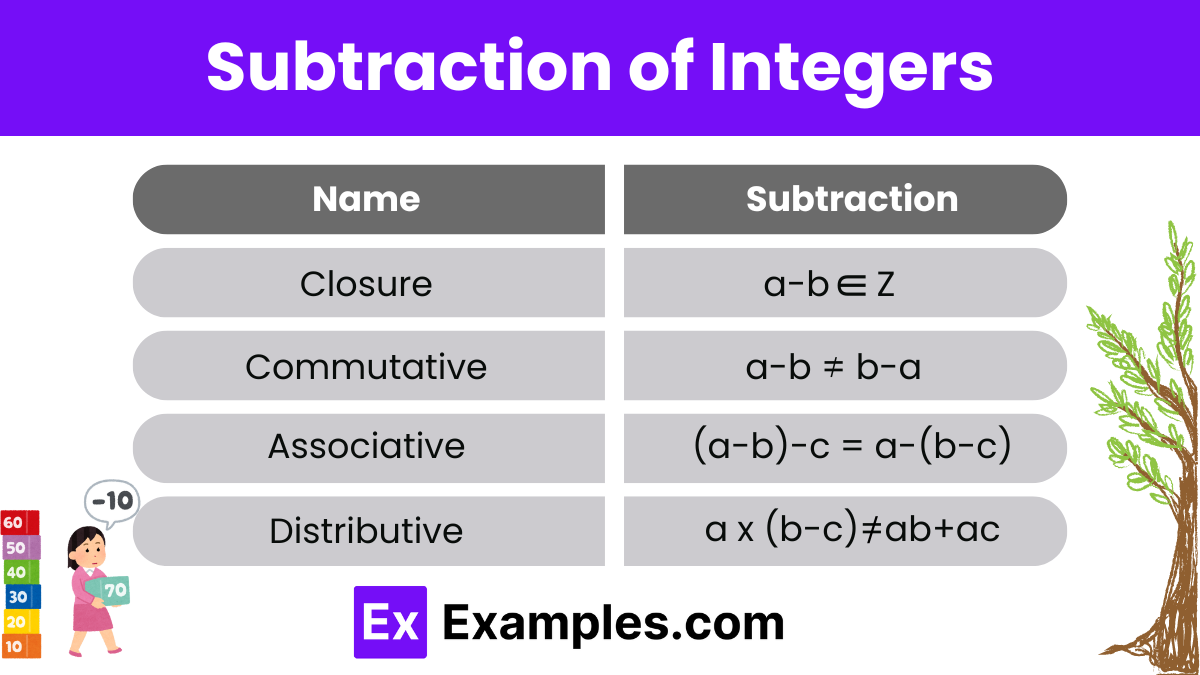
To grasp the concept of subtracting numbers using a number line, let’s examine the following example.

Here, subtraction of 4 from 6 gives 2.
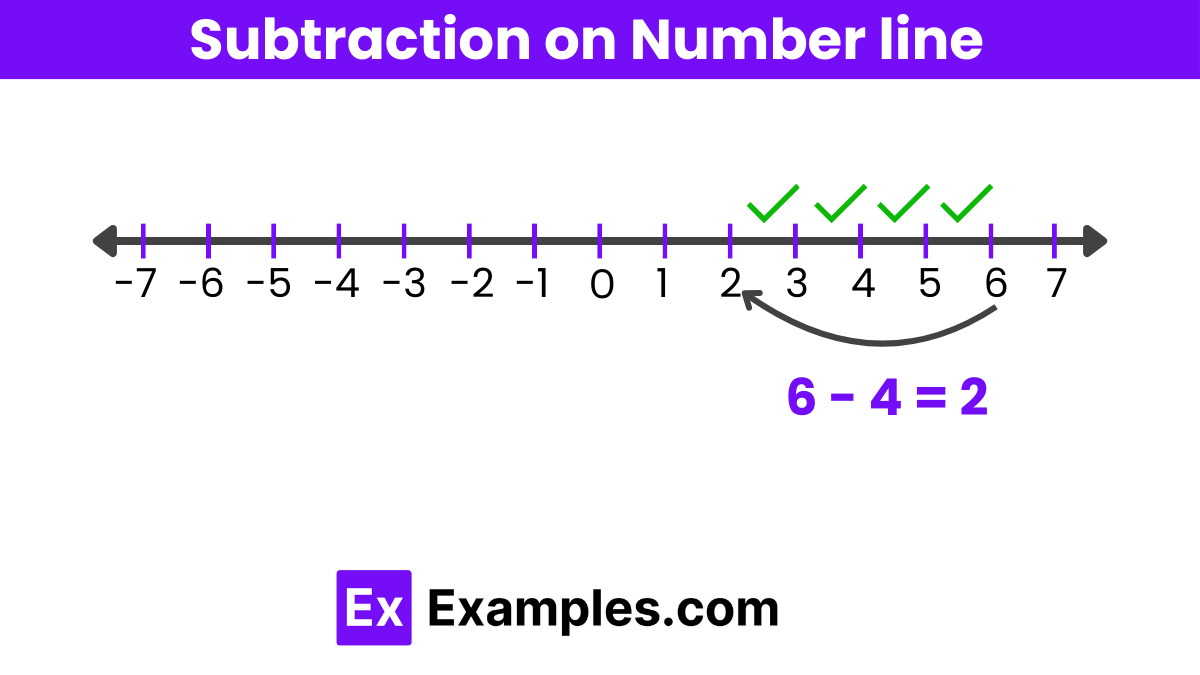
Solving word problems is a practical way to apply subtraction skills in real-world situations. Here are some examples of subtraction word problems across various contexts.
Emma had $45 saved up and she spent $20 on a new book. How much money does Emma have left?
Solution: Subtract the amount spent from the initial savings: $45 – $20 = $25. Emma has $25 left.
A baker made 120 cookies in the morning and sold 75 of them by the afternoon. How many cookies does the baker have left?
Solution: Subtract the number of cookies sold from the total made: 120 – 75 = 45 cookies left.
In a marathon, Peter has run 26 miles but still has 0.2 miles to go to finish the race. What is the total distance of the marathon?
Solution: Subtract the distance remaining from the distance covered: 26 + 0.2 = 26.2 miles for the total marathon distance.
Lucy borrowed 8 books from the library. If she returned 3 books, how many books does she still have?
Solution: Subtract the number of books returned from the total borrowed: 8 – 3 = 5 books still with Lucy.
There were 17 birds in the garden in the morning. By evening, 5 birds had flown away. How many birds are left in the garden?
Solution: Subtract the number of birds that flew away from the total number in the morning: 17 – 5 = 12 birds left.
Subtraction in math is the operation of deducting one number from another to find the difference. It’s a fundamental arithmetic process used to calculate how much remains when a quantity is taken from another.
The three types of subtraction include: 1) Taking Away, where one quantity is removed from another, 2) Comparison, determining the difference between two quantities, and 3) Finding the Missing Addend, identifying a number that, when added to a known quantity, reaches a given sum.
The subtraction symbol is the minus sign (“-“). It denotes the operation of subtraction, indicating that one number should be subtracted from another to find the difference.
In Class 4 subtraction, students tackle more complex problems, including subtracting large numbers, understanding regrouping (borrowing), and applying subtraction in practical situations like word problems and money calculations.
Three-step subtraction involves multiple layers of subtraction, often with regrouping. First, subtract the ones, then the tens (regrouping if necessary), and finally, subtract the hundreds or beyond, always moving from right to left across the number
Text prompt
Add Tone
10 Examples of Public speaking
20 Examples of Gas lighting
What is the result of 23 minus 15?
6
7
8
9
Calculate 40 minus 18.
20
22
24
26
Find the result of 58 minus 29.
27
28
29
30
What is 75 minus 37?
36
38
42
46
Calculate 90 minus 45.
40
45
50
55
What is the result of 56 minus 28?
28
30
32
34
Find the result of 63 minus 24.
37
38
39
40
What is 82 minus 41?
39
40
41
45
Calculate 100 minus 75.
20
23
25
27
What is the result of 88 minus 44?
40
42
44
46
Before you leave, take our quick quiz to enhance your learning!

